
Keywords: biodiversity
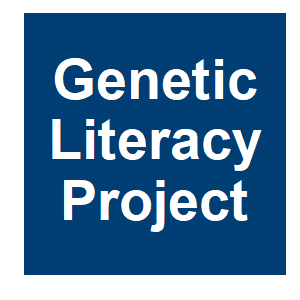
|
Social justice environmental activists move to block gene editing to control invasive species and promote biodiversity. Here’s why they’re misguidedS. Smyth, Genetic Literacy Project, 2023.
Control of invasive species has been extremely difficult with eradication virtually impossible. To control invasive plant species, chemicals are commonly used while in some instances removal of plants by hand, as Shiva advocates, is undertaken. Efforts to control invasive animals ... Keywords: Australia, biodiversity, Cas 9, climate-change, CRISPR, gene drive synthetic, gene editing, invasive species, Synthetic biology |
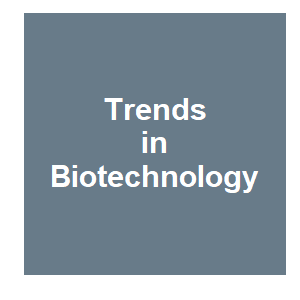
|
Gene Drive in Species Complexes: Defining Target OrganismsJ. B. Connolly, J. Romeis, Y. Devos, D. C. M. Glandorf, G. Turner and M. B. Coulibaly, Trends in Biotechnology, 2022.
Engineered gene drives, which bias their own inheritance to increase in frequency in target populations, are being developed to control mosquito malaria vectors. Such mosquitoes can belong to complexes of both vector and non-vector species that can produce fertile interspecific ... Keywords: Australia, biodiversity, Cas 9, climate-change, CRISPR, gene drive synthetic, gene editing, invasive species, Synthetic biology |

|
Faut-il miser sur le forçage génétique contre les espèces invasives?P. Minet, Le Temps, 2021.
Un «gene drive» peut servir à annihiler complètement et rapidement une population d’animaux indésirables. Prometteuse pour lutter contre les espèces invasives, cette technologie a fait l’objet d’âpres débats dans le cadre du congrès mondial de la nature à ... Keywords: Australia, biodiversity, Cas 9, climate-change, CRISPR, gene drive synthetic, gene editing, invasive species, Synthetic biology |

|
The international governance of gene drive organismsF. Rabitz, Environmental Politics, 2021.
Gene Drive Organisms (GDOs) are a proposed biotechnological intervention that might generate significant benefits for the conservation and sustainable use of biological diversity while also raising critical biosafety issues. Despite their inevitable transboundary effects, their ... Keywords: Australia, biodiversity, Cas 9, climate-change, CRISPR, gene drive synthetic, gene editing, invasive species, Synthetic biology |

|
Invasive Mice and Engineered GenesW. M. Adams and K. H. Redford, Yale University Press Blog, 2021.
On Gough Island, a steep speck of land deep in the South Atlantic, giant mice eat albatross chicks as they sit on their nests. They are house mice, accidental arrivals on the ships of long-dead sealers. But they have lost their secretive, timid, mousy ways. Over numerous ... Keywords: Australia, biodiversity, Cas 9, climate-change, CRISPR, gene drive synthetic, gene editing, invasive species, Synthetic biology |
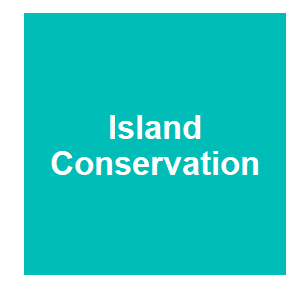
|
World Nature Conservation Day: Technology to Forge a Path for Nature Conservation and CommunitiesP. Becker, Isand Conservation, 2021.
Gene drives are a genetic phenomenon that occurs in nature and causes a gene or trait to have a greater than 50% chance of inheritance. Island Conservation and partners have formed the Genetic Biocontrol of Invasive Rodents (GBIRd) partnership, to explore the technical and social ... Keywords: Australia, biodiversity, Cas 9, climate-change, CRISPR, gene drive synthetic, gene editing, invasive species, Synthetic biology |

|
Gene Drive: The Technology and its Potentials for Biodiversity ConservatioZ. Bugnosen, Science Speaks, 2021.
Gene drive is a gene editing tool that is rapidly advancing as scientists investigate further its potentials to address concerns related to agriculture, the environment, and even human health. To help the public understand it better, ISAAA and its network of Biotechnology ... Keywords: Australia, biodiversity, Cas 9, climate-change, CRISPR, gene drive synthetic, gene editing, invasive species, Synthetic biology |

|
How Brussels can help or hinder the fight against malariaF. Okumu, EURACTIV, 2021.
In the wake of the pandemic, the world has much for which to thank Europe. Not only did European science lead the field in developing the first approved vaccine against COVID-19, but the EU’s long history of rigorous regulatory approval has also allowed for public confidence in ... Keywords: Australia, biodiversity, Cas 9, climate-change, CRISPR, gene drive synthetic, gene editing, invasive species, Synthetic biology |

|
Assisting Evolution: How Far Should We Go to Help Species Adapt?E. Kolbert, YaleEnvironment360, 2021.
It was a hot, intensely blue day in the Australian Outback, about 350 miles north of Adelaide. I was tagging along with Moseby as she checked the batteries on the motion-sensitive cameras that dot Arid Recovery, an ecosystem restoration project she and her husband launched in ... Keywords: Australia, biodiversity, Cas 9, climate-change, CRISPR, gene drive synthetic, gene editing, invasive species, Synthetic biology |

|
Should we dim the sun? Will we even have a choiceE. Klein, New York Times, 2021.
“Under a White Sky” is going to be on my best books of 2021 list. It’s a wonderful work. Kolbert is the Pulitzer Prize-winning author of “The Sixth Extinction,” which you may have read. She is a staff writer at The New Yorker and just one of the great science ... Keywords: Australia, biodiversity, Cas 9, climate-change, CRISPR, gene drive synthetic, gene editing, invasive species, Synthetic biology |

|
Research and Innovation for biodiversity: what role for gene drive research?EP Intergroup CCBSD, European Bureau of Conservation and Development, 2020.
This webinar will provide an overview of how gene drive works and the problems it seeks to solve, introduce the most advanced research projects on gene drive in the sector of public health and conservation and present the work that international and European bodies such as WHO, ... Keywords: Australia, biodiversity, Cas 9, climate-change, CRISPR, gene drive synthetic, gene editing, invasive species, Synthetic biology |

|
Interview with Professor Austin Burt: Role of gene drive technology in the context of the EU’s Biodiversity Strategy 2030S. Dunphy, European Scientist, 2020.
In view of these conditions, leading scientists are calling on EU institutions to continue to back research into gene drive as a potential tool to protect public health and deliver on Europe’s biodiversity goals. Experts believe gene drive technologies could be a vital and ... Keywords: Australia, biodiversity, Cas 9, climate-change, CRISPR, gene drive synthetic, gene editing, invasive species, Synthetic biology |

|
Underlying beliefs linked to public opinion about gene drive and pest-specific toxin for pest controlE. A. MacDonald, E. Edwards, J. Balanovic and F. Medvecky, Wildlife Research, 2020.
Public engagement that acknowledges and responds to these underlying beliefs, rather than a traditional campaign based on biodiversity and environmental gains, may be more effective at creating a constructive dialogue about if and how these tools should be used, and to avoid ... Keywords: Australia, biodiversity, Cas 9, climate-change, CRISPR, gene drive synthetic, gene editing, invasive species, Synthetic biology |

|
Governing New Biotechnologies for Biodiversity Conservation: Gene Drives, International Law, and Emerging PoliticsJ. L. Reynolds, Global Environmental Politics, 20:28-48. 2020.
This article describes and analyzes the international law and politics of gene drives’ research, development, and possible use, with an emphasis on their potential biodiversity applications. Keywords: Australia, biodiversity, Cas 9, climate-change, CRISPR, gene drive synthetic, gene editing, invasive species, Synthetic biology |
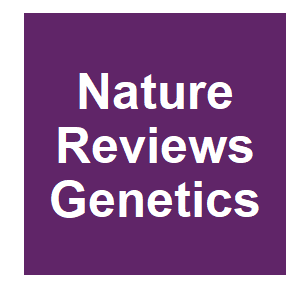
|
The potential of genomics for restoring ecosystems and biodiversityM. F. Breed, P. A. Harrison, C. Blyth, M. Byrne, V. Gaget, N. J. C. Gellie, S. V. C. Groom, R. Hodgson, J. G. Mills, T. A. A. Prowse, D. A. Steane and J. J. Mohr, Nature Reviews Genetics, 20:615-628. 2019.
Existing and emerging genomics tools offer the potential to improve the odds of achieving these targets. These tools include population genomics that can improve seed sourcing, meta-omics that can improve assessment and monitoring of restoration outcomes, and genome editing that ... Keywords: Australia, biodiversity, Cas 9, climate-change, CRISPR, gene drive synthetic, gene editing, invasive species, Synthetic biology |

|
Synthetic Biology and the United NationsH.-E. Lai, C. Canavan, L. Cameron, S. Moore, M. Danchenko, T. Kuiken, Z. Sekeyová and P. S. Freemont, Trends in Biotechnology, 37:1146-1151. 2019.
Synthetic biology is a rapidly emerging interdisciplinary field of science and engineering that aims to redesign living systems through reprogramming genetic information. The field has catalysed global debate among policymakers and publics. Here we describe how synthetic biology ... Keywords: Australia, biodiversity, Cas 9, climate-change, CRISPR, gene drive synthetic, gene editing, invasive species, Synthetic biology |
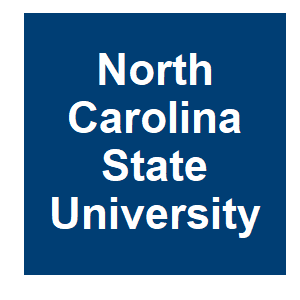
|
Exploring Stakeholder Perspectives on the Development of a Gene Drive Mouse for Biodiversity Protection on Islands: Workshop ReportM. Farooque, S. K. Barnhill-Dilling, J. Shapiro and J. Delborne, North Carolina State University, 2019.
The “Exploring Stakeholder Perspectives on the Development of a Gene Drive Mouse for Biodiversity Protection” workshop was held on the North Carolina State University campus in Raleigh, NC on March 7-8, 2019, aiming to convene a diverse group of stakeholders, scientists, ... Keywords: Australia, biodiversity, Cas 9, climate-change, CRISPR, gene drive synthetic, gene editing, invasive species, Synthetic biology |
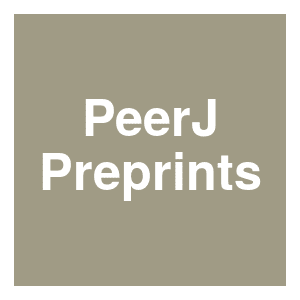
|
A sustainable synthetic biology approach for the control of the invasive golden mussel (Limnoperna fortunei)M. F. Rebelo, L. F. Afonso, J. A. Americo, L. da Silva, J. L. B. Neto, F. Dondero and Q. Zhang, PeerJ Preprints, 6:e27164v3. 2018.
The recent development of the CRISPR-Cas9-based gene drive has created the conditions to seriously consider this technology to solve one of the major environmental challenges in biodiversity conservation i.e. the control of invasive species. There is no efficient control method ... Keywords: Australia, biodiversity, Cas 9, climate-change, CRISPR, gene drive synthetic, gene editing, invasive species, Synthetic biology |

|
A bigger toolbox: Biotechnology in biodiversity conservationR. T. Corlett, Trends in Biotechnology, 35:55-65. 2017.
Conservation biology needs a bigger toolbox to meet unprecedented challenges. Genomics, fueled by declining sequencing costs, offers novel tools with increased precision for genetic questions previously answered with a few molecular markers, as well as completely new ... Keywords: Australia, biodiversity, Cas 9, climate-change, CRISPR, gene drive synthetic, gene editing, invasive species, Synthetic biology |

Contact
David O’Brochta
Foundation for the
National Institutes of Health
geneconvenevi@fnih.org
RSS

